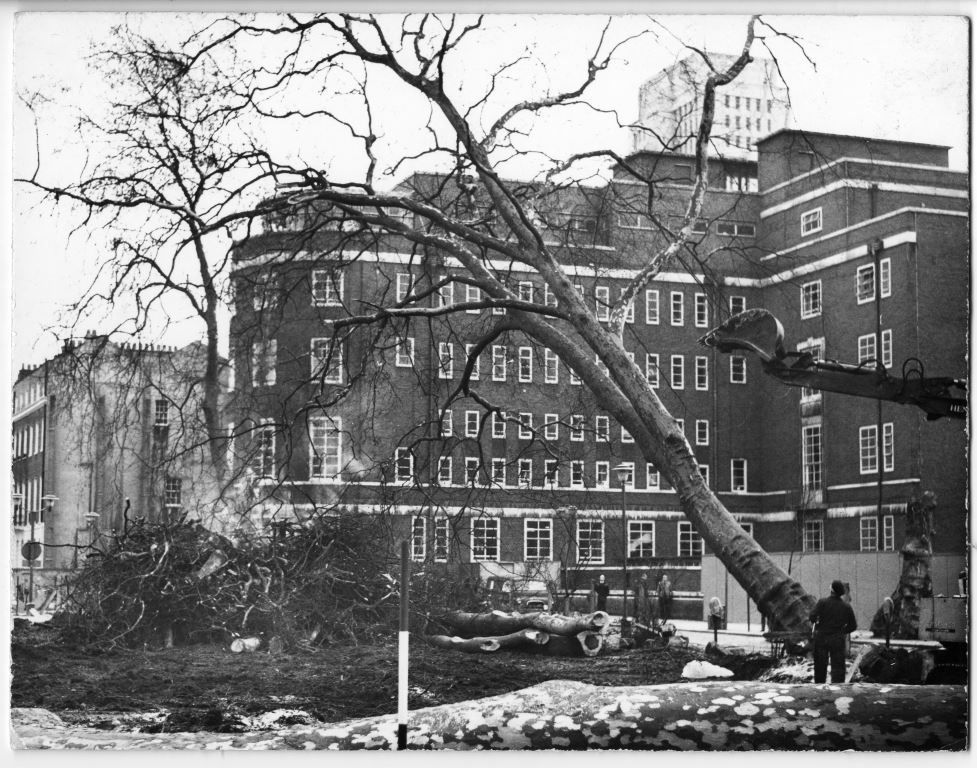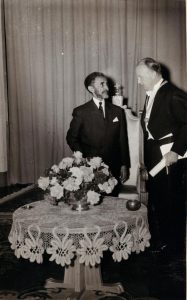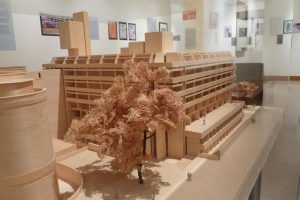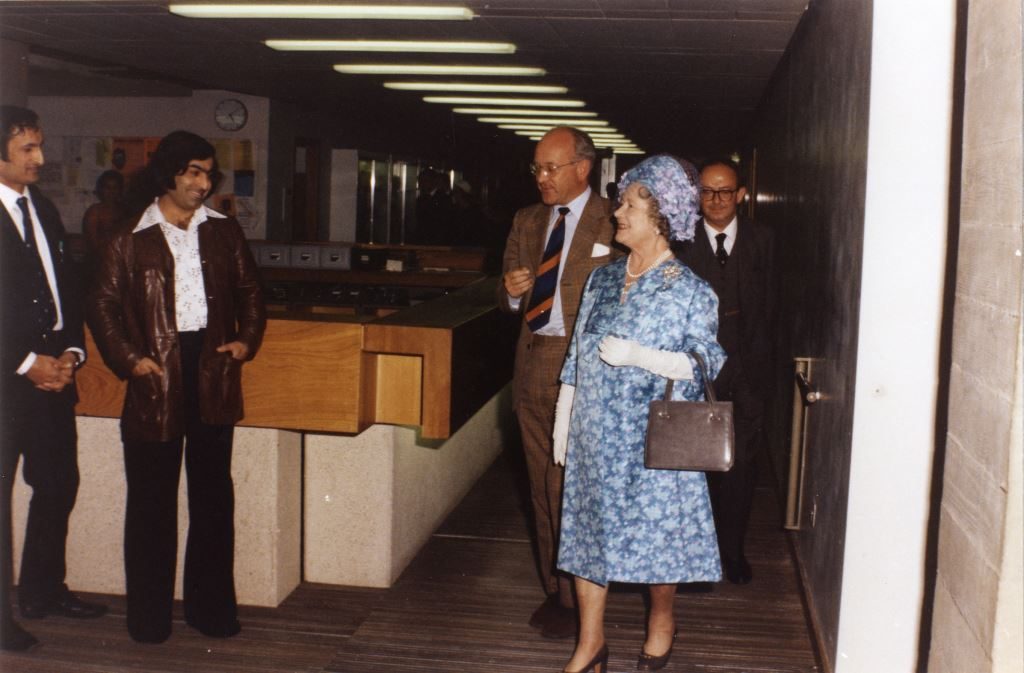Academics, Agents & Activists: A history of the School of Oriental and African Studies, 1916-2016
Over the next few weeks John Hollingworth, Gallery Manager and co-curator of ‘Academics, Agents & Activists: a history of the School of Oriental and African Studies, 1916-2016’, will be introducing this fascinating centenary exhibition currently on display at the Brunei Gallery until 17th December. The exhibition tells a history of the School from the perspective of its people and spaces, highlighting the contributions and experiences of a selection of individuals who represent the diversity and character of SOAS. It also showcases material from the incredibly rich archive collections at SOAS – both the School’s own institutional archive and material held by Archives & Special Collections, SOAS Library. The exhibition is organized around the tenures of the School’s Directors, with the third being that of Cyril Philips.
The Philips Years (1956-76)

Sir Cyril Philips (1912-2005), SOAS Director 1957-1976, 2014. Oil on canvas, by Colleen Quill. © SOAS
Philips was a noted historian and is credited with being the moderniser of the School of Oriental and African Studies.
“Sir Cyril Philips became Director in 1956, and virtually remade the school in the following years. With the help of the great American foundations, he raised the money to build a major new library building with classroom and staff accommodation. He defeated opposition from conservationists, who feared the destruction of Woburn Square, in a dramatic and emotional speech at a meeting of the University Convocation in 1969. Again with the assistance of the foundations, he obtained the money for the creation of new posts in the social and political sciences, leading to the building of new academic departments and to the gradual alteration in the character of the school from being a school dominated by classical and language studies to one in which modern, non-language studies had the (primary) role.” (Malcolm Yapp, Professor Emeritus, SOAS)
The Directorship of Philips is notable for the dramatic expansion of fields of study at SOAS, especially in the Social Sciences. In 1964, two departments were merged at SOAS to become one department of Economic and Political Studies, with Edith Penrose as its head. In 1965, the School created an equally significant new department of Geography under the headship of Charles Fisher (1916-1982), a specialist on East Asian geography and Japanese. During the war he served with the Royal Engineers and had been captured in Singapore and held as a prisoner of war in Changi and on the Burma Railway. In memory of this he wrote ‘Three times a guest: recollections of Japan and the Japanese, 1942 – 1969’ (1979).
With new academic departments came increased staff and student numbers and expansion was necessary. Initially, a fourth floor was added to the existing main School building in 1961 to accommodate the staff who at that time occupied five houses in Woburn Square. These would later be demolished to make way for a new building and library.

Tree felling to make way for the Philips Building, 25 February 1970. Ref: SOAS Picture Archive. SOAS buildings, Box 3. © SOAS
The new building was designed by eminent architect Sir Denys Louis Lasdun, CH CBE (1914 – 2001), whose other work included the Institute of Education and the National Theatre on the South Bank, considered to be fine examples of ‘brutalist’ design.
In 1973 the new Library was opened by the Queen Mother as Chancellor of the University of London. The new building (now named the Philips Building) contained urgently needed offices and teaching rooms and provided the Library with facilities appropriate to the international importance of the collection and to growing student numbers.

Roland Oliver presented with a prize by Haile Selassie Emperor of Ethiopia in 1966. Reproduced with permission © Sarah Oliver
During this period Roland Oliver (1923-2014) taught at SOAS, until the late 1980’s, and produced a substantial amount of literature on African History over this period. Today he is considered one of the key figures in the construction of African Studies in the UK.
One of his contemporaries George Bertram Milner (1918-2012) brought to SOAS the study of a large part of the world not previously covered, the South Pacific. His Fijian Grammar was the first to attempt to describe the structure of Fijian in its own rather than in Western terms. Both this and his Samoan Dictionary, though banned by the Samoan government for a while for reasons that remain unclear, were hugely influential in the field of Pacific linguistics, and remain the standard works to this day. Since then SOAS has had no post in Pacific languages or studies. He remains unique in the history of SOAS.
“Fijian is only one of the Pacific languages which owes a profound debt to George’s meticulous scholarship.” (Ratu Sir Kamisese Mara, Prime Minister of Fiji)


